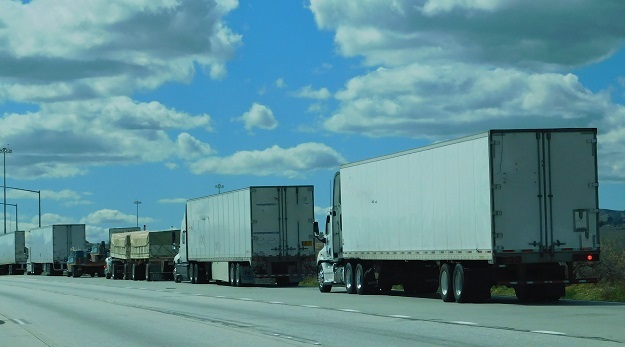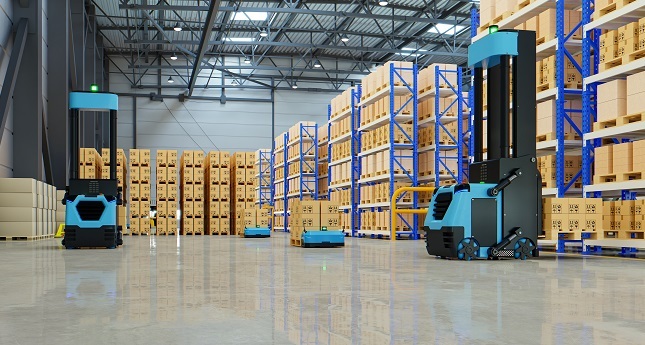
 Data Structure
Data Structure Networking
Networking RDBMS
RDBMS Operating System
Operating System Java
Java MS Excel
MS Excel iOS
iOS HTML
HTML CSS
CSS Android
Android Python
Python C Programming
C Programming C++
C++ C#
C# MongoDB
MongoDB MySQL
MySQL Javascript
Javascript PHP
PHP
- Selected Reading
- UPSC IAS Exams Notes
- Developer's Best Practices
- Questions and Answers
- Effective Resume Writing
- HR Interview Questions
- Computer Glossary
- Who is Who
What is the full form of DHL?
The History of DHL
Dalsey Hillblom Lynn (DHL) was founded in 1969 through 3 entrepreneurs - Adrian Dalsey, Larry Hillblom, and Robert Lynn. To begin with, the organisation started by delivering files between San Francisco and Honolulu. Soon, DHL increased its operations to other nations, such as Japan, Hong Kong, and Australia.

In the 1970s and 1980s, DHL became a pioneer in the worldwide specific shipping market, providing a faster and greater reliable service than its competitors. The organisation's achievement was driven through its progressive use of technology, which includes the primary computerised tracking device and the primary handheld scanners for tracking applications.
In 1998, DHL became a part of the German logistics organisation, Deutsche publish AG. Since then, DHL has continued to increase its international network, providing a huge range of logistics services to organisations and people worldwide. Nowadays, DHL has a presence in over 220 nations and territories and employs over 400,000 humans.
Services Offered by DHL
DHL gives a huge range of logistics services to companies and individuals worldwide. some of the important key services provided through DHL consist of
Explicit transport DHL gives fast and reliable door-to-door delivery of packages and files to over 220 nations and territories worldwide
Freight transportation DHL gives air, ocean, and street freight services for companies of all sizes.
Warehousing and success DHL affords warehousing, distribution, and success services to assist companies manage their inventory and supply chain.
Customs services DHL gives customs brokerage services to assist companies navigate the complexities of worldwide trade.
Industry solutions DHL gives industry-unique solutions for sectors which include automobile, healthcare, and retail.
E-trade solutions DHL offers a range of e-trade services, consisting of online marketplaces, fee solutions, and logistics services for online stores.
Green logistics DHL is dedicated to sustainability and gives a variety of green logistics solutions, consisting of alternative fuel automobiles and carbon offsetting applications
DHL's Global Network and Infrastructure
DHL has one of the largest huge worldwide logistics networks in the world. The organisation has a presence in over 220 countries and territories, with more than 4,000 facilities worldwide.
DHL operates a fleet of over 250 planes, consisting of Boeing 777 and 747 freighters, as well as a network of ground transportation automobiles. This permits the organisation to provide fast and reliable air and ground transportation services for shipments of all sizes.
DHL also operates numerous hubs and gateways around the sector, which include the DHL explicit worldwide Hub in Cincinnati, Ohio, that is the organisation's primary hub for worldwide shipments. The hub covers a place of 900 acres and is able to process over 160,000 shipments per hour.

Similarly, to its transportation and logistics infrastructure, DHL additionally has a strong technology backbone. The organisation's IT systems and platforms allow clients to track and control their shipments in real-time, as well as streamline their supply chain operations. DHL also invests closely in innovation, consisting of exploring new technology such as drones and self-reliant automobiles to enhance its logistics abilities.
DHL's Environmental Initiatives
DHL is committed to decreasing its effect on the surroundings and has implemented a number of tasks to promote sustainability throughout its operations. here are some of the important key environmental tasks undertaken through DHL
GoGreen DHL's GoGreen software aims to reduce the organisation's carbon emissions and improve its energy performance. As a part of this program, DHL has set a target of decreasing its carbon emissions by 50% through 2050.
Alternative fuels DHL is exploring the use of alternative fuels along with electric powered and hybrid cars, biofuels, and natural gas to reduce its carbon footprint.
Green facilities DHL is building green facilities that contain power-efficient features including solar panels, rainwater harvesting systems, and green roofs.
Packaging optimization DHL is working with clients to optimise packaging and decrease waste, while also ensuring that products are transported safely and securely.
Carbon offsetting DHL gives carbon offsetting programs that permit clients to offset the carbon emissions associated with their shipments.
Sustainable supply chain DHL is running with suppliers to promote sustainable practices and decrease the environmental impact of its supply chain.
Future of DHL and Emerging Technologies in Logistics
The future of DHL looks promising, with the company continuing to invest in emerging technologies and new logistics solutions. Here are some of the key areas of focus for DHL
Automation and robotics DHL is exploring using automation and robotics in its warehouses and transportation operations to enhance performance and reduce costs.
Internet of things (IoT) DHL is leveraging IoT technology to track and reveal shipments in actual-time, permitting clients to have more visibility and control over their supply chain.
Artificial intelligence (AI) and device learning DHL is the use of AI and device learning to optimise routing and scheduling, in addition to to forecast demand and manage inventory.
Blockchain DHL is exploring using blockchain technology to enhance supply chain visibility and protection, and to streamline the flow of products and information.
Electric powered and self reliant motors DHL is checking out electric powered and self reliant motors for closing-mile delivery, with the aim of reducing carbon emissions and improving overall performance.
Conclusion
DHL is one of the international's leading logistics corporations, with an international network and infrastructure that allows it to deliver fast and reliable transportation and logistics services to firms and individuals global. The company's commitment to sustainability and innovation is reflected in its environmental responsibilities and awareness of emerging technology consisting of automation, IoT, AI, blockchain, and electric powered and self reliant vehicles. As DHL continues to invest in those areas and discover new logistics solutions, it is properly-located to fulfil the evolving goals of its customers and to power innovation and increase in the logistics industry.
FAQs
Q1.Where is Dalsey Hillblom Lynn located?
Ans: Dalsey Hillblom Lynn has a worldwide presence, with operations in over 220 international places and territories globally. The company is set up in Bonn, Germany.
Q2. Does DHL provide carbon offsetting programs?
Ans: Yes, DHL offers carbon offsetting programs that allow users to offset the carbon emissions related to their shipments.
Q3. Where does DHL operate?
Ans: Dalsey Hillblom Lynn Operates in over 220 worldwide locations and territories global, with more than 4,000 facilities and a fleet of over 250 aircraft.

